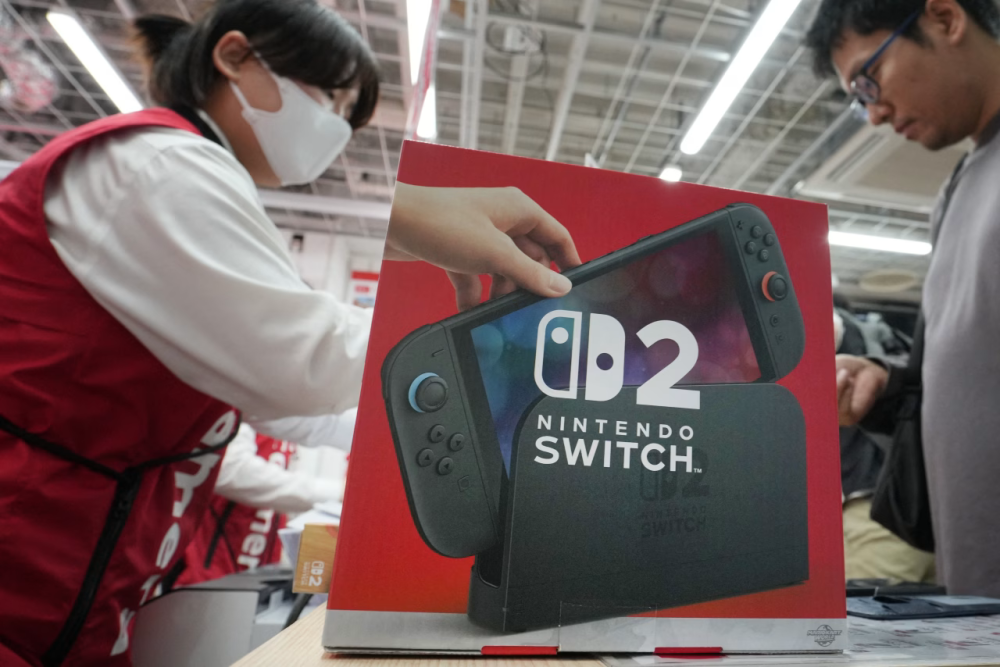
Nintendo Switch 2 gặp rủi ro lớn vì phụ thuộc nam châm đất hiếm từ Trung Quốc
-
Nintendo Switch 2 sử dụng nam châm đất hiếm neodymium để giữ Joy-Cons trên thân máy, khác với thiết kế trượt vật lý của phiên bản Switch đầu tiên ra mắt năm 2017.
-
Các nam châm này chủ yếu được sản xuất tại Trung Quốc – quốc gia dẫn đầu về tinh luyện đất hiếm toàn cầu.
-
Mặc dù Nintendo đã chuyển một phần sản xuất sang Việt Nam nhằm giảm thiểu ảnh hưởng từ thuế quan của Mỹ, các linh kiện đất hiếm vẫn phụ thuộc vào nguồn cung từ Trung Quốc.
-
Trung Quốc hiện cho phép xuất khẩu các linh kiện đã tích hợp đất hiếm dễ dàng hơn so với việc xuất khẩu nguyên liệu thô hoặc nam châm riêng lẻ, nhờ các quy định cấp phép nghiêm ngặt.
-
Điều này thúc đẩy các công ty sản xuất hoàn chỉnh linh kiện ngay tại Trung Quốc để né tránh quy trình xin giấy phép xuất khẩu phức tạp.
-
Giá Switch 2 bắt đầu từ 450 USD và đã bán được hơn 3,5 triệu máy toàn cầu chỉ trong 4 ngày đầu tiên ra mắt vào tháng 6.
-
Cổ phiếu Nintendo tăng 37% trong năm 2025 nhờ vào thành công ban đầu của Switch 2.
-
Tổng thống Trump mới đây áp thuế 20% với hàng hóa từ Việt Nam, trong khi hàng hóa Trung Quốc bị áp mức thuế trung bình từ 40% đến 50%, khiến chiến lược chuyển sản xuất của Nintendo gặp thách thức.
-
Nhà phân tích Ming-Chi Kuo cho biết việc kiểm soát xuất khẩu đất hiếm vẫn là con bài chiến lược quan trọng của Trung Quốc trong đàm phán thương mại với Mỹ.
-
Nhiều công ty hiện ưu tiên sản xuất linh kiện đất hiếm ngay tại Trung Quốc để giảm rủi ro địa chính trị và phức tạp thủ tục xuất khẩu.
📌 Nintendo Switch 2 đã bán hơn 3,5 triệu máy trong 4 ngày nhờ thiết kế mới dùng nam châm neodymium, nhưng phụ thuộc lớn vào nguồn cung từ Trung Quốc – nơi chiếm ưu thế về đất hiếm. Dù chuyển sản xuất sang Việt Nam, Nintendo vẫn đối mặt nguy cơ gián đoạn chuỗi cung ứng do các quy định xuất khẩu đất hiếm của Trung Quốc.
https://www.wsj.com/world/china/nintendos-use-of-a-rare-earth-magnet-for-the-switch-2-could-expose-it-to-chinas-whims-b15b543a
Nintendo’s Use of a Rare-Earth Magnet for the Switch 2 Could Expose It to China’s Whims
Neodymium-based magnets used in the Switch 2 are primarily produced in China, the leader in rare-earth refining
Thảo luận
Follow Us
Tin phổ biến



